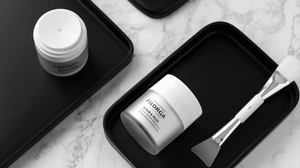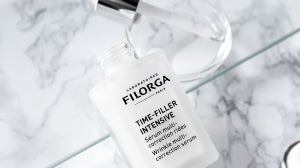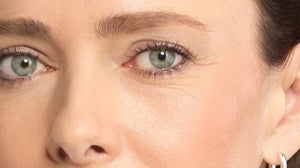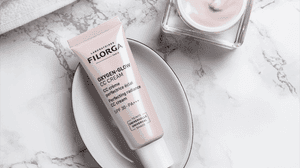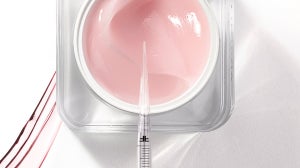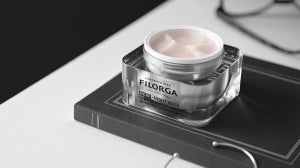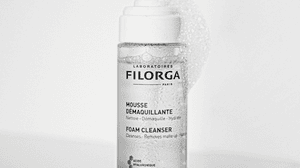
Understanding your skin type is essential to providing targeted action to help your skin look and feel its best. Normal, dry, oily, or combination … each skin is unique and comes with its own challenges.
Read on to find out how to know your skin type, and how to choose tailored skincare products for your skin types’ needs.
SKIN TYPE TEST
The best way to determine your skin type is to do a skin type test.
BLOTTING PAPER SKIN TYPE TEST
Blotting sheets absorb oil and, when pressed against the skin, help to indicate your skin type. Ensure to blot on makeup-free skin that was cleansed several hours before.
Step 1: Gently pat a piece of blotting paper onto the t-zone, cheeks and chin, using a new sheet for each area.
Step 2: Hold the blotting paper up to the light.
Step 3: Observe the amount of visible oil on each sheet of paper.
If there is minimal oil on all pieces of the blotting paper, it’s likely you have dry skin. If there is oil from the T-zone section but not elsewhere, then you have normal or combination skin. If all sheets have visible oil, you have oily skin.
THE BARE FACE SKIN TYPE TEST
The bare face method requires you to observe the state of your natural skin when cleansed and product free.
Step 1: Cleanse the face thoroughly with a gentle cleanser, like Filorga Age-Purifying Cleansing Gel.
Step 2: Gently pat the skin dry with a clean towel.
Step 3: Remain bare faced, and don’t apply serums, creams or treatments.
Step 4: After 30 minutes, analyse how the skin feels. Is there is any oil, redness, shine, or dry patches?
If the skin feels tight or uncomfortable, especially when smiling, this indicates a dry skin type. If there is oiliness or shine solely in the T-zone, that is combination skin. If you are shiny on all areas, you likely have oily skin.
THE 4 MAIN SKIN TYPES
Skin types are determined by genetics, environmental stressors, hormones, and lifestyle habits. They all have common characteristics but require different key ingredients to maintain a healthy-looking appearance.
DRY SKIN
From tightness and flakiness to redness and itching, dry skin needs special attention. Deficient in lipids, dry skin tends to become dehydrated due to a porous protective barrier that encourages evaporation. It’s typically caused by genetics, over washing, cold weather, or sun damage.
SKINCARE FOR DRY SKIN
The best skincare products for dry skin are gentle. Skincare routines for dry skin need to be infused with hydrating and protecting products that deeply moisturise the skin, while helping to repair the skin barrier. Beneficial ingredients include hyaluronic acid, shear butter, ceramides, and glycerin.
OILY SKIN
The oily skin type is characterised by the overproduction of sebum from sebaceous glands under the skin. Oily skin is prone to imperfections, shine and excess oil over the entire face. It’s also characterised by enlarged pores, blackheads and spots.
Although skin may already feel dewy, it’s essential to moisturise to avoid the skin overcompensating through excess oil production.
SKINCARE FOR OILY SKIN
A skincare routine for oily skin should include cleansing, exfoliating, moisturising, and a weekly purifying mask. Opt for lightweight products that are oil-free and include key ingredients like glycolic acid, zinc and hyaluronic acid to hydrate the skin, without clogging pores.
COMBINATION SKIN
A hybrid between dry and oily skin, combination skin is the most difficult skin type to identify. It’s characterised by oily areas (the forehead, nose and chin, or the T-zone) and by drier areas around the cheek. It’s caused by genetics, hormonal changes or weather changes.
SKINCARE FOR COMBINATION SKIN
A skincare routine for combination skin requires clarifying products to remove oil and dirt from the pores yet should remain gentle and hydrate the drier areas. Instead of applying different products to different areas of the face, opt for products that are a middle ground, with hydrating yet lightweight formulas.
NORMAL SKIN
‘Normal skin type’ refers to balanced skin that shows no signs of major imperfections and is easy to take care of. Personal preference of textures and richness can be followed when caring for this skin type. As there are no specific skin concerns, focus on maintaining skin’s healthy balance, hydration and radiance.
SKINCARE FOR NORMAL SKIN
To implement a skincare routine for normal skin, use of a gentle cleanser, hydrate the skin with a rejuvenating moisturiser, apply SPF to help protect the skin from harmful UV rays, and use a weekly face mask for an extra boost if desired.


